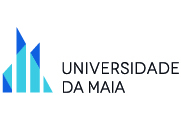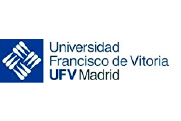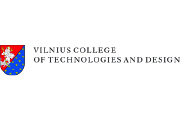
Erasmus+
D-PBL
The objectives of the D-PBL project are grounded on three dimensions: giving sense to technical skills by providing a real context for the learning path; giving effective digital competencies which are useful for business; and integrating students into real multi-national teams. Partial specific objectives include: assessing lecturers’ digital skills (as their digital skills should be solid in order to teach them to students); training lecturers in the necessary blend of digital and pedagogic competencies; conceiving the space (room) where students and lecturers will work on their projects, enabling both the technical context and digital apparatus, i.e. create the D-PBL cell; and organizing multi-national teams working on business problems and finding solutions, while communicating via digital technologies.
- O1 - EAD Digital Competencies Survey
- O2 - EAD Training toolkit for Teachers
- O3 - Architecture of Digital PBL Cells
- O4 - Guidelines for PBL Digital Teaching-Learning


Identified Needs
Most students that finish their courses at HEIs acquire technical skills. But do they know the purpose of such skills? Are they prepared to apply them in their jobs? And the technical skills do not represent the full story. Businesses live in a global, digitally connected world. today’s students are digital natives, do they have the necessary digital competencies, like doing collaborative work using digital technologies? The aim of the D-PBL project is to combine digital teaching–learning with project-based learning, applied in an international context. PBL focuses on problem-solving and solution seeking, providing students with a rich learning path, given that the job market increasingly demands transversal skills in teams to achieve a better collective intelligence effort. D-PBL promotes outcome-oriented learning while integrating transdisciplinary approaches with innovative active pedagogic practices. Students, mainly, and lecturers, jointly, are the target groups addressed in the project. The former benefit from increasing their digital competencies, above all those that will be structural when they enter their jobs, and also benefit from a recent but effective pedagogical learning process that focuses both on technical and transversal competencies. The latter benefit from an update of their digital competencies and improving their pedagogical skills, likewise, becoming more effective while lecturing, and, at the same time, establishing a mutual communication platform with their students. Together, all benefit from inclusion in Europe, exchanging learning experiences and progressing with other European colleagues, but avoiding the inconvenient, time-consuming and costly travelling and settling in. Collaborating in the creation of methodologies and tools aimed at developing specific student competencies will enable teachers/lecturers to act in correspondence with the HE institutions’ strategy and better respond to current societal needs.
Goal and Target Groups
The aim of the D-PBL project is to combine digital teaching–learning (EAD) with project-based learning (PBL), applied in a multi-national context, for the benefit of HE students and lecturers. The main target groups of D-PBL project are higher education students and lecturers. Both students and lecturers will be selected from the partner institutions’ academic community. All the partners have direct access to the target groups, ensuring a large user base that will be involved in the project activities and benefit from its results/impact. This user base will be widely extended once the project implements its dissemination and exploitation plan reaching other HE institutions at regional/national and European levels. Students, mainly, and lecturers, jointly, are the target groups addressed in the project.


Methodology
The first output will be the EAD Digital Competencies Survey. This output will be divided into two separate deliverables: first, the survey itself to be applied to HE lecturers/teachers ascertain whether they have the required EAD skills; second, the analysis of the responses collected that will result in a needs analysis report. The project will then develop the EAD Training Toolkit/Course for Teachers. This toolkit will include user manuals (in video and e-book format) on technical, pedagogical, and behavioural features. This toolkit is aimed at capacitating lecturers/teachers so that later they can use the digital cells and apply PBL in the classroom context. The project will also design and deliver the Architecture of Digital D-PBL Cells (R3) which is intended to be drawings and guidelines of the room where D-PBL is to be operationalized. The output encompasses the layouts, definition of the equipment and decking, and guides for the lecturer stance and staging. This will be the PBL group “headquarters”, from which most of the multidisciplinary teamwork will be carried out. Finally, the project will produce a set of guidelines for digital problem-based teaching-learning. These guidelines will resume the results gathered during the implementation of the project, both on development and piloting in a real classroom context. This will work as a reference for other higher education organizations and initiatives in this field.
Expected Results
– Advancement of HE students’ transversal skills and employability.
– Enhancement of ICT and pedagogical skills of HE lecturers/teachers.
– Contributing to boosting virtual mobility and exchange in higher education across Europe.
– Contributing to the development of new educational models in the EHEA (European Higher Education Area), focusing on employability, interdisciplinary and international teamwork, and virtual environments.
– Granting minority, disadvantaged groups of students a real opportunity to experience internationalization during their studies, eliminating barriers to international mobility and promoting equity.
– Offering a unique benchmark to universities willing to adopt similar pedagogies allowing them to observe and setup their own digital cells and benefit from our prior experience and support. Students will gain new competencies in distance project work based on real problems, combining and using the benefits of new technologies.

News & Update
D-PBL students win an entrepreneurial competition in Portugal
We are thrilled to announce that our amazing team has won an award at...
D-PBL Multiplier Event – Porto, Portugal
On Thursday, May 9th, 2024, the Instituto Superior de Engenharia do Porto hosted a...

The European Commission’s support for the production of this publication does not constitute an endorsement of the contents, which reflect the views only of the authors, and the Commission cannot be held responsible for any use which may be made of the information contained therein.












